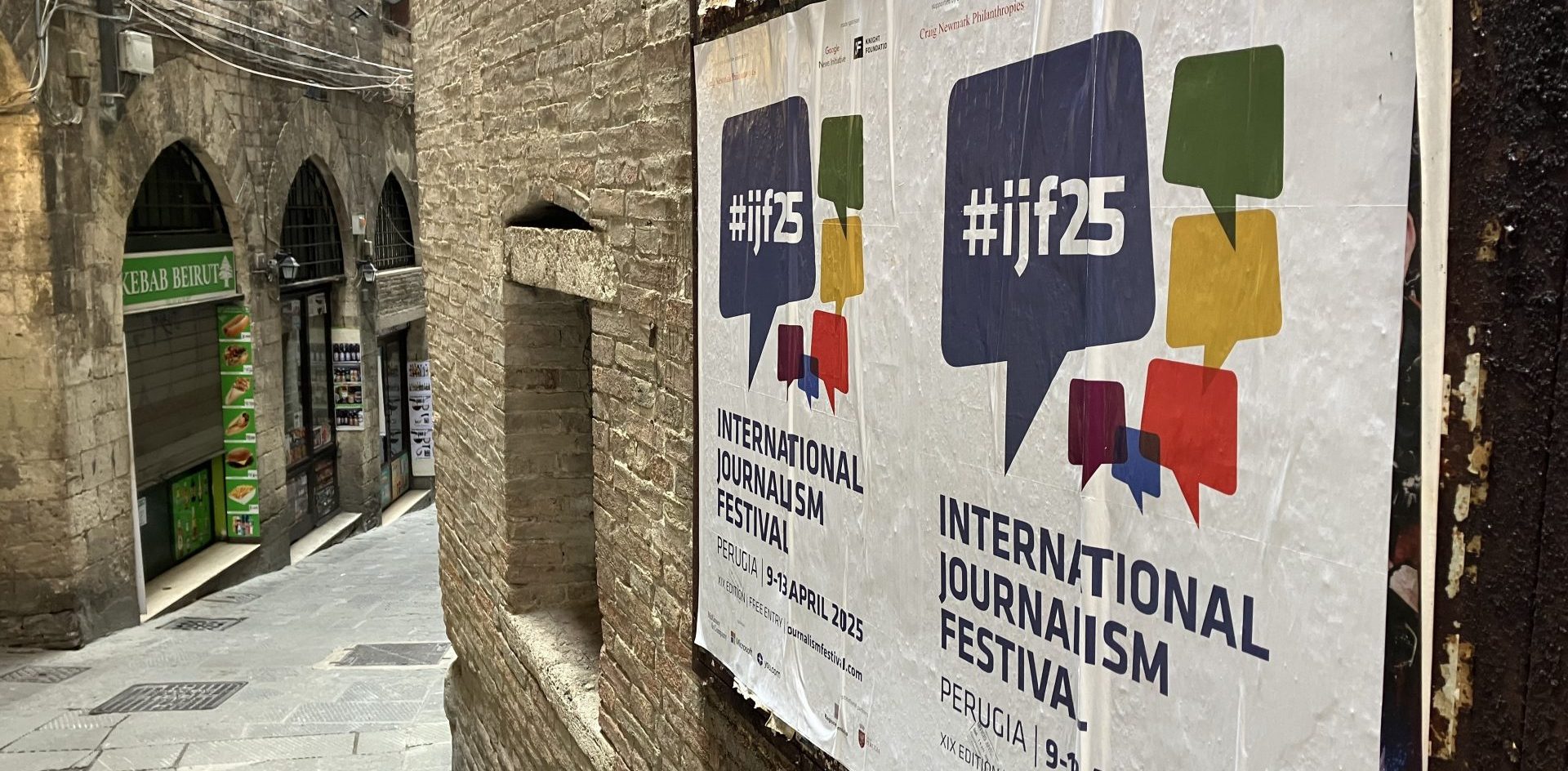
Newsletter
Newsletter
AI is starting to prove its worth to media companies. We highlight how to manage the change necessary to take advantage of AI’s promise.
21st February 2025

The age of experimentation in AI in publishing has given way to the age of investment. Major publishers are placing big bets on AI, and those investments are paying off. Publishers leverage AI not only to make newsroom operations more efficient but also to carry out analyses that wouldn’t be possible without it. They are also using AI to optimise their business operations, increasing conversion and retention through predictive analytics, “dynamic and adaptive” propensity modelling and personalisation.
Large media organisations are striking deals with the major LLM players and aggressively rolling out AI across their operations. However, JournalismAI’s Tshepo Tshabalala says the rollout of AI is unequal and risks leaving smaller newsrooms and media groups behind because they lack the technical skills or resources. Culture is also at play as it is in any major digital transformation project.
Fortunately, pioneers are developing change processes that are speeding the responsible adoption of these technologies. Organisations should:
If you’d like to discuss how you are using AI, especially in how you’d like to use it, consider joining our professional community, Mobile Matters. Head over here to join the community.
Kevin & James
By Kevin Anderson
The pace of development with AI and media is relentless. The Guardian was the latest news organisation to announce a partnership with OpenAI. Major media organisations are deploying AI solutions to deliver more value to audiences and achieve their editorial and commercial goals.
The New York Times, along with other publishers, might be suing OpenAI and Microsoft for copyright infringement, but the international publishing leader just announced a major initiative to increase the use of AI in its editorial operations as it rolled out a new internal tool called Echo. In the announcement, its leadership said:
“Generative AI can assist our journalists in uncovering the truth and helping more people understand the world. Machine learning already helps us report stories we couldn’t otherwise.”
A year ago, Times reporters Jennifer Valentino-DeVries and Michael H. Keller used AI to analyse 2.1 images from underage Instagram influencers across 5,000 “mom-run accounts”. They focused on accounts with more than 500 followers and images of children with form-fitting or revealing clothing. They “used software from Microsoft and Google to classify how suggestive the images were”. They found that the suggestive posts were more likely to receive likes and comments, and they covered a culture in which some mothers felt forced to post the images to support their children’s dancing careers while other mothers sold men special photo sets.
In addition to high-impact journalism, publishers are also leveraging AI to drive subscription and retention through content personalisation, predictive analytics, adaptive propensity modelling and dynamic or intelligent paywalls. A few media organisations build the tools in-house but many, if not most, buy them from vendors such as Piano, Zuora or Mather’s Sophi.
India’s Times Internet rolled out an AI-enabled propensity to subscribe model, which has increased the “paywall efficiency by about 50%” and helped them optimise advertising and subscription efforts, Puneet Gupt, COO of Times Internet, told WAN-IFRA.
Times Internet is employing AI tools across its business. It uses the online video editor RunwayML to animate what has previously been static creatives and an AI tool that has increased interactivity in their banner campaigns, which has increased eCPMs by 4x.
They are using AI to support the creation of crosswords and make the production of Sudoku more efficient, and they also have rolled out AI tools in the newsrooms, which has resulted in a 60% increase in productivity, Puneet said.
But as Tshepo with LSE’s JournalismAI programme said, AI adoption has been uneven across the industry. At INMA’s Vail Roundtable in September 2024, a quick poll of 50 media leaders found an AI tool adoption rate of only 25% to 30%. McKinsey has found that, unlike other digital solutions where only US$1 needs to be spent on change management for every US$1 spent on development, change management costs are three times higher for implementing generative AI applications, INMA’s generative AI lead Sonali Verma said.
As with any major initiative, alignment on goals from senior leadership is critical, especially as experimentation shifts to execution.
Support at India’s Times Internet came at the board level, and they rolled out “behavioural incentives” to speed adoption across teams, Puneet said. It is a management challenge as they balance business-as-usual operations and “high-velocity AI-driven innovation”, which required organisational changes to support that as well.
Once those goals are agreed upon, they need to be communicated, and as with any communication, a single meeting isn’t enough. Goals need to be re-iterated and reinforced. Checking progress against agreed-upon outcomes will not only help measure progress but also help embed the goals into the process.
AI offers opportunities to create value across the organisation, and by building cross-functional teams, it helps build relationships to deliver AI innovation and achieve change. The revolution brought by AI will continue to roll out over the coming years, and these relationships will be an important resource for building the agility and resiliency of your organisation.
One of the major points of resistance to AI has been the perception that a focus on efficiency will mean further job cuts. For many journalists, change has meant “doing more with less”, and the less has meant fewer colleagues helping them report and create content or sell advertising and sponsorships to support the business. A weariness and cynicism need to be recognised if this has been the recent history of your organisation.
However, AI offers the opportunity to honestly achieve more with less. It can be used to reduce the drudgery of tasks like adding alt text to images, creating social media posts for multiple platforms and quickly summarising stories. These efficiency gains are low-hanging fruit for AI implementation. You can stress how time savings can be reinvested in reporting and creating original, differentiated journalism and other content. It will build goodwill for the change needed to fully embrace the opportunities provided by AI.
AI platforms and applications are proliferating at an incredible rate, and AI experts talk of having to constantly update their slide decks due the rapidly changing market. The complexity of the market and the technical learning curve for some tools can be intimidating to journalists and content creators. Editors and other leaders need to support a culture of learning as teams explore this emerging technology. “It’s important to remember no one is an expert when everyone is learning”, Lena K Samuelsson, senior advisor for Schibsted, told an INMA town hall on newsroom transformation.
The earliest and easiest applications of AI will be about streamlining production processes and common applications such as translation, metadata creation and management and summarisation. However, this will be the lowest common denominator, Ezra Eeman, the strategy and innovation director at Dutch public broadcaster NPO, has said. The guiding principle at NPO is to use AI tools to “create value more efficiently rather than replace humans”.
This could be by using AI tools to analyse data and events at scales that wouldn’t have been possible before, as the New York Times did in its story about child influencers on Instagram. Or AI can be leveraged in personalisation and recommendation systems that help audiences find content relevant to them much more easily.
As successful applications for AI success become more common in media, it will be easier to make the case for staff to adopt these tools, but the technical and change management processes to deliver on the promise of AI are still complex. Fortunately, as more companies successfully implement AI tools, we can look to successful models of change management to accelerate adoption.
Advance Local, one of the largest local news groups in the United States, has launched 23 apps on the Pugpig Bolt app platform in a major step forward in its digital transformation plan. The company had recently ceased printing several of its newspapers so needed products to support a robust digital subscription strategy. The apps were launched quickly, with work beginning in September 2024 and the apps being launched in three tranches between December 2024 and January 2025. They wanted to continue The Oregonian’s popular morning and afternoon editions, and the app features an HTML cover reminiscent of the paper’s front page. And the app also features obituaries from Legacy.com, a popular section on their website.
Here are some of the most important headlines about the business of news and publishing as well as strategies and tactics in product management, analytics and audience engagement.

Newsletter

Newsletter

Newsletter

Newsletter

Newsletter